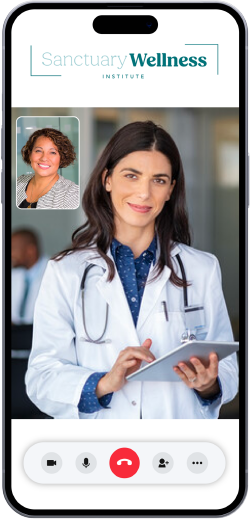How to Get a Medical Marijuana Card in California

Schedule an Evaluation with a Certified Physician
Schedule an appointment with a licensed medical marijuana doctor.

Receive Your Doctor’s Recommendation
Once your doctor approves you for medical marijuana, they’ll email you an electronic recommendation that you can use to shop at California dispensaries.

Apply for a Medical Marijuana Identification Card (Optional)
If you want the legal protection and tax benefits of a California medical marijuana identification card (MMIC), you can apply for one in person at the health department in your home county. The cost of an MMIC varies from county to county.

California Medical Marijuana Qualifying Conditions
To qualify for a California MMIC, you must be diagnosed with one of the state’s qualifying conditions. Those conditions are as follows:
- Persistent muscle spasms (e.g., spasms associated with multiple sclerosis)
- Seizures (e.g., epileptic seizures)
- Severe nausea
- Any other chronic or persistent medical symptom that either substantially limits a person's ability to conduct one or more of major life activities as defined in the federal Americans with Disabilities Act of 1990, or, if not alleviated, may cause serious harm to the person's safety, physical, or mental health
Where Can I Buy Medical Marijuana in California?
There are over 1,000 medical marijuana dispensaries operating in California. As a certified patient or caregiver, you can purchase a variety of products, including edibles, concentrates, topicals, tinctures, and cannabis flower. The purchase limit for Californians is eight ounces of medical cannabis per day. See our California dispensary guide.
About California Cannabis Program
The California medical marijuana program was established in 1996 with the passing of Proposition 215, also known as the Compassionate Use Act. This landmark legislation made California the first state in the U.S. to legalize medical marijuana, allowing patients with a valid doctor's recommendation to use cannabis for medical purposes.
The program, which is regulated by the California Department of Public Health, requires patients to obtain a valid doctor's recommendation and, if they so choose, apply for a medical marijuana identification card to use cannabis for medical purposes. Through the program, qualified patients can access a variety of medical cannabis products from licensed dispensaries.

How to Renew Your Card in California
In California, medical marijuana patients must renew their medical marijuana cards annually. To renew your card, complete the following steps:
- Schedule Your Renewal Appointment:Book with with a licensed physician.
- Receive Your Doctor’s Recommendation: Once your doctor approves you for medical marijuana, they’ll email you a new electronic recommendation that you can use to continue shopping at California dispensaries.
- Apply for a New Medical Marijuana Identification Card (Optional): If you want the legal protection and tax benefits of a California medical marijuana identification card (MMIC), you can apply for a new one in person at the health department in your home county. The cost of renewing an MMIC varies from county to county.
How to Become a Medical Marijuana Caregiver in CA

In California, a primary caregiver is someone whom a qualifying medical marijuana patient designates to help them with the acquisition and administration of medical marijuana. Caregivers must be at least 18 years old and live in California.
Like the state’s medical marijuana patients, California caregivers are not required to apply for an MMIC. But if you wish to apply for one, you cannot do so yourself. Rather, the patient you plan to care for must indicate they want a caregiver on their application, and then you must accompany them to their county’s health department to submit it. The fee for a caregiver MMIC varies from county to county.
Frequently Asked Questions
If you wish to apply for an MMIC, you must do so in person at your county department of health’s office. However, you only need a doctor’s recommendation to purchase medical marijuana in California.
The cost of applying for an MMIC in California varies based on the county you reside in.
Once you submit your application for a medical marijuana identification card in California, the county has 30 days to review it. Once it's approved, the county has five days to deliver your card.
Yes, a minor can obtain medical marijuana in California, but they must receive consent from a parent or guardian and designate a primary caregiver to acquire their cannabis for them.
Yes, if your evaluating doctor deems it appropriate, you can get a medical card for anxiety in California.
In California, medical marijuana patients can purchase up to eight ounces of dried cannabis or its equivalent in other forms per day.
Yes, if you’re at least 21 years old, you can purchase cannabis from California dispensaries without a medical marijuana card. However, you'll need a doctor’s recommendation to buy medical cannabis products.
Yes, you can grow marijuana plants at home in California. Under Proposition 64, adults aged 21 and over can grow up to six marijuana plants per household.
California does not recognize out-of-state medical marijuana cards. That said, people who need it for medicinal reasons can still buy similar products thanks to the state’s recreational laws.
The answer as to whether you can use your CA medical card in another state will depend on the state you're visiting. Some states honor out-of-state cards, while others don't. Be sure to check the other state's reciprocity laws before you travel there.
Yes, you must be 21 or older to have, purchase or use recreational cannabis. This includes smoking, vaping and eating cannabis-infused products.
The MMIC may be valid for up to one year.
Renewing an MMIC requires the same process as when you originally applied. This includes verifying your information and giving you a new MMIC and unique user identification number. If your medical documentation is still valid, you may use this for your renewal. It may be necessary for you to obtain new medical documentation. Your county program will verify any information they feel is necessary. You will need to contact their office for more information.
Let's Talk
Our mission is to provide easily accessible health and wellness services to help our patients live their best lives. Reach out to us to learn more about our services.